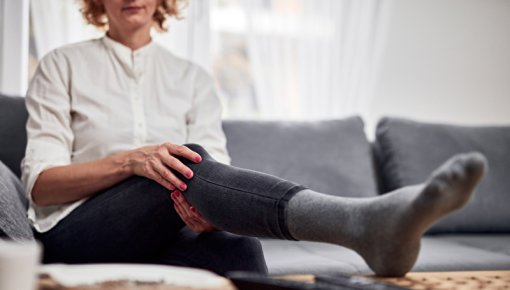Braun J, Müller-Wieland D. Basislehrbuch Innere Medizin. München: Urban und Fischer; 2018.
Brazier BG, Sudekum SA, DeVito PM et al. Arthroscopic Treatment of Popliteal Cysts. Arthrosc Tech 2018; 7(11): e1109-e1114.
Deutsche Gesellschaft für Orthopädie und Orthopädische Chirurgie (DGOOC). Gonarthrose (S2k-Leitlinie, in Überarbeitung). AWMF-Registernr.: 033-004. 2018.
Di Sante L, Paoloni M, Dimaggio M et al. Ultrasound-guided aspiration and corticosteroid injection compared to horizontal therapy for treatment of knee osteoarthritis complicated with Baker's cyst: a randomized, controlled trial. Eur J Phys Rehabil Med 2012; 48(4): 561-567.
Han JH, Bae JH, Nha KW et al. Arthroscopic Treatment of Popliteal Cysts with and without Cystectomy: A Systematic Review and Meta-Analysis. Knee Surg Relat Res 2019; 31(2): 103-112.
Hautmann MG, Jung EM, Beyer LP et al. Is low dose radiotherapy an effective treatment for Baker's cyst? Strahlenther Onkol 2019; 195(1): 69-76.
Kampen WU, Freudenberg LS, Fischer M et al. Die Bakerzyste - das stumpfe Damoklesschwert bei der Radiosynoviorthese (RSO)? [The Baker's cyst - a blunt sword of Damokles in radiosynoviorthesis (RSO)?]. Nuklearmedizin 2022; 61(1): 42-48.
Klett R. Einfluss der Radiosynoviorthese des Kniegelenks auf bestehende Bakerzysten [Radiosynoviorthesis of the knee joint: Influence on Baker's cysts]. Nuklearmedizin 2020; 59(6): 415-418.
Leib A, D., Roshan A, Foris L, A. et al. Baker's Cyst (StatPearls Publishing LLC). 2020.
Li H, Zhang M, Li Y et al. Comparison of clinical outcomes associated with arthroscopic cyst wall preservation or resection in the treatment of popliteal cyst: a systematic review and meta-analysis. Arch Orthop Trauma Surg 2021; 141(10): 1741-1752.
Pschyrembel Online. Wickel. 2020.
Van Nest DS, Tjoumakaris FP, Smith BJ et al. Popliteal Cysts: A Systematic Review of Nonoperative and Operative Treatment. JBJS Rev 2020; 8(3): e0139.
IQWiG health information is written with the aim of helping people understand the advantages and disadvantages of the main treatment options and health care services.
Because IQWiG is a German institute, some of the information provided here is specific to the German health care system. The suitability of any of the described options in an individual case can be determined by talking to a doctor. informedhealth.org can provide support for talks with doctors and other medical professionals, but cannot replace them. We do not offer individual consultations.
Our information is based on the results of good-quality studies. It is written by a team of health care professionals, scientists and editors, and reviewed by external experts. You can find a detailed description of how our health information is produced and updated in our methods.

